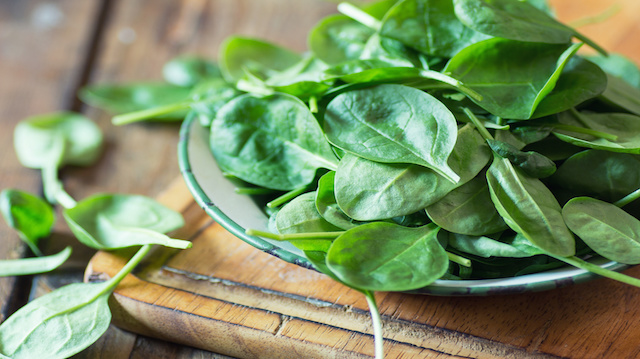
Advertisement
A plant-based diet is often associated with various health benefits, but which leafy green is best for you?
Three different studies conducted by researchers from the University of Cambridge and the University of Southampton suggest that whatever veggie you add to your diet, it is best to choose leafy greens rich in nitrate. This chemical boosts heart efficiency and lowers diabetes and obesity risk.
Nitrate is a simple chemical that thins the blood and ensures that oxygen is delivered efficiently throughout the body. Additionally, reducing blood thickness reduces instances of fatal clots forming and lowers the risk of both stroke and heart attacks.
Leafy greens for heart health
The first study published in the Journal of the Federation of American Societies for Experimental Biology revealed that consuming spinach and other nitrate-rich vegetables reduced the production of the hormone erythropoietin, which is produced by the kidneys and the liver.
Too much erythropoietin means more red blood cells are produced. Too many blood cells can cause altitude sickness and even death. Thickening of the blood because of hypoxia (oxygen starvation) is a common symptom in different types of heart diseases.
The study suggests that a diet rich in plant foods can help address the debilitating symptoms of damaged hearts.
The second study published in The Journal of Physiology reported that the consumption of beetroot and other nitrate-rich leafy greens helped address the symptoms of several heart and circulatory diseases.
Nitrates protect essential proteins in heart cells. By increasing the production of a compound that makes blood vessels widen, nitrates enable the heart to pump more efficiently.
Since nitrate-rich leafy greens are readily available and inexpensive, a plant-based diet is one of the most effective ways to boost heart health.
Nitrates and “good” fat cells
The third study published in the journal Diabetes, showed that nitrate can stimulate the conversion of white or “bad” fat cells into beige cells via a process called browning.
Beige fat cells are similar to brown or “good” fat cells. Beige cells also burn fat to produce heat.
Findings from the third study imply that making simple dietary changes can lower the number of white fat cells that you have and reduce your risk of obesity and Type 2 diabetes.
Murray, who was involved in all three studies, concluded that many study findings have verified the benefits of nitrates for lowering blood pressure and regulating the body’s metabolism. The studies prove that changes in your dietary habits can significantly reduce your risk of developing Type 2 diabetes and obesity.
Eating well also helps address several symptoms of existing cardiovascular conditions and improves your overall well-being.
5 Healthiest veggies to add to your diet
Aside from veggies rich in nitrates like beetroot and spinach, here are five nutritious vegetables that you should eat more for better overall health.
Cabbage
Cabbage is one of the healthiest vegetables that you can add to your salads and smoothies.
Compared to other vegetable varieties, cabbage is more affordable. It supports gut health and it contains phytochemicals that help prevent cancer and other diseases.
Cabbage is an anti-inflammatory and it is rich in vitamins C and K. It’s also a rich source of essential minerals such as calcium, iodine, iron, magnesium and potassium.
Dulse
Dulse is a red alga full of essential nutrients such as iron and vitamins A, B6, B12 and E.
Dulse is naturally salty and can be eaten in its whole-leaf form. Use it as a healthier replacement for salt in salads and other savory dishes.
Romaine lettuce
Romaine lettuce is chock-full of nutrients like beta-carotene, fiber vitamin C. These three nutrients work together to prevent cholesterol from oxidizing, which prevents plaque from forming along your artery walls.
Red bell peppers
Citrus fruits like oranges and lemons are known for being rich in vitamin C, an important antioxidant. However, red bell peppers are actually one of the best sources of vitamin C.
Compared to oranges, red bell peppers contain about 153 mg of vitamin C per serving or a whopping 200 percent of the daily value. Red bell peppers are also rich in fiber, folate, niacin, thiamine and vitamins A, B6 and K.
Sweet potatoes
Sweet potatoes are starchy vegetables, but they’re actually good for you. They contain vitamins A and C that prevent free radical damage, and carotenoids and beta-carotene that your body turns into vitamin A.
Sweet potatoes also help fight cancer, heart disease and other conditions linked to inflammation.
Keep your heart healthy by eating lots of veggies, especially those full of beneficial nitrates like leafy greens.
Sources:
Advertisements







